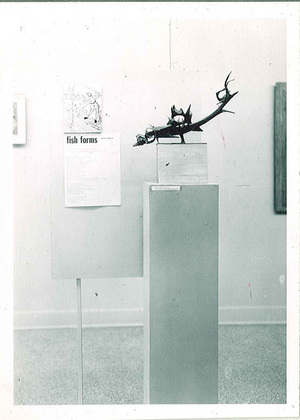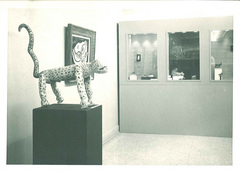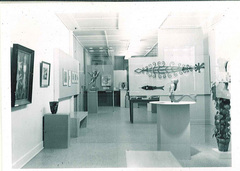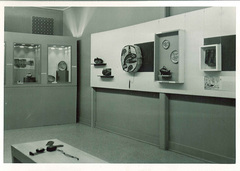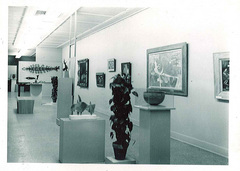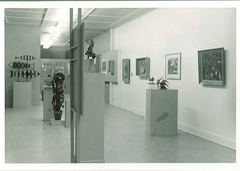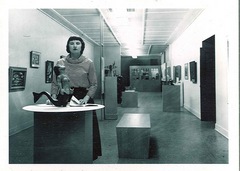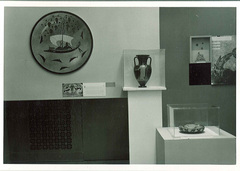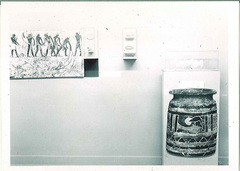The recent opening of WAM’s summer show, Tenuous, Though Real, which features Minnesota artists, has me wondering – What makes a Minnesotan? There are certainly stereotypes – such as the tendency to accentuate vowels in verbal conversation, knowing the definition of the term “lutefisk,” and harboring a preferential way in which one prepares “lefsa” (If it isn’t with brown sugar, than all I have to say is… Ufda.)
I am a true Minnesotan, born and raised. However, I must confess that my identity as related to my home state is devoid of one common stereotype: I have never “gone fishing.” That is right… I have never put bait to hook, nor fly to reel… Growing up, the “great outdoors” was experienced at the ballpark rather than on one of the many thousands of MN lakes… (In fact, my hometown resides in the only county in the state without a natural lake.)
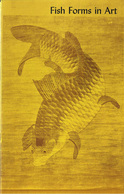 Despite never experiencing the thrill of a big catch, I still understand and recognize the importance of the “fish” in MN culture. This understanding was likely the inspiration for an exhibit held at the University Gallery in the spring of 1955 titled, “Fish Forms in Art.” The works on display captured the form of the fish in a variety of mediums and represented many cultures.
Despite never experiencing the thrill of a big catch, I still understand and recognize the importance of the “fish” in MN culture. This understanding was likely the inspiration for an exhibit held at the University Gallery in the spring of 1955 titled, “Fish Forms in Art.” The works on display captured the form of the fish in a variety of mediums and represented many cultures.
A University Press Release from April 7, 1955 described the exhibit:
… an attempt was made to get objects representative of all major areas and periods in the history of art. [The] largest single group is made of works of contemporary artists such as Picasso, Braque, Lachaise, Lurcat, and Masson. The oldest piece in the showing of 97 objects is a slate palette in the shape of a fish dating from the predynastic period in Egypt (before 3200 B.C.) and loaned by the University Museum, Philadelphia… Because China and Korea consider the fish in special esteem, the two countries are represented by example of porcelain, painting and carving in ivory and jade. From America, Indian pottery from the southwest is shown along with a carved polychrome wood garden fountain…
Materials created to support and promote the exhibit include an exhibit catalog (above) as well as posters that were likely posted on campus bulletin boards.
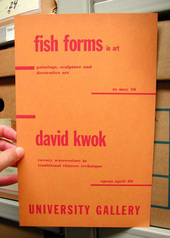
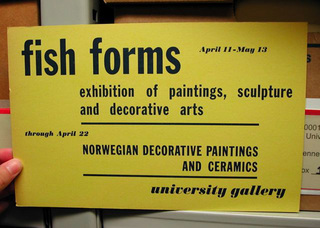
Photographs from the exhibit found in Box 5 of the WAM collection at the University Archives:
*Click on the photo for a pop-up to a larger version.
